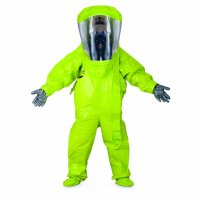Jesus.
Masks are effective by creating a barrier to wider spread dissemination of the virus - literally no one is saying that they prevent the transmission of the virus in totality but as someone who I assume prescribes to evidence based science, how can you read this article and say "masks don't help?"
https://files.fast.ai/papers/masks_lit_review.pdf
Multiple studies show the filtration effects of cloth masks relative to surgical masks. Particle sizes for speech are on the order of 1 µm (20) while typical definitions of droplet size are 5 µm-10 µm (5). Generally available household materials had between a 49% and 86% filtration rate for 0.02 µm exhaled particles whereas surgical masks filtered 89% of those particles (21). In a laboratory setting, household materials had 3% to 60% filtration rate for particles in the relevant size range, finding them comparable to some surgical masks (22). In another laboratory setup, a tea cloth mask was found to filter 60% of particles between 0.02 µm to 1 µm, where surgical masks filtered 75% (23). Dato et al (2006) (24), note that "quality commercial masks are not always accessible." They designed and tested a mask made from heavyweight T-shirts, finding that it "offered substantial protection from the challenge aerosol and showed good fit with minimal leakage".Although cloth and surgical masks are primarily targeted towards droplet particles, some evidence suggests they may have a partial effect in reducing viral aerosol shedding (25).
Discussion and Recommendations Our review of the literature offers evidence in favor of widespread mask use to reduce community transmission:
nonmedical masks use materials that obstruct droplets of the necessary size; people are most infectious in the initial period post-infection, where it is common to have few or no symptoms (10–16);
non-medical masks have been effective in reducing transmission of influenza; non-medical masks have been shown to be effective in small trials at blocking transmission of coronavirus; and places and time periods where mask usage is required or widespread have shown substantially lower community transmission.



